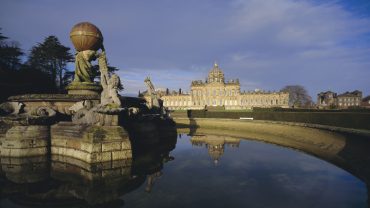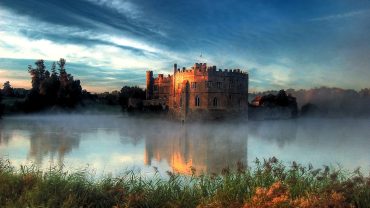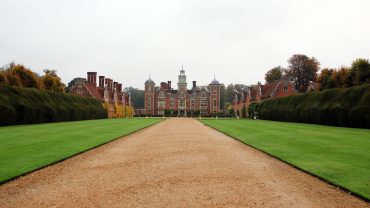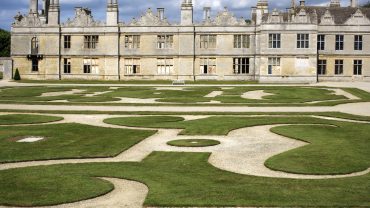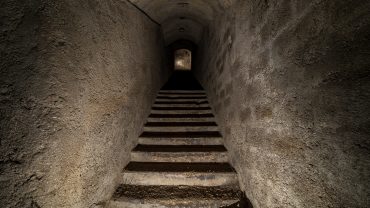The story of tiny homes in the UK stretches back centuries, rooted in the housing needs of workers during the Industrial Revolution. In the eighteenth and nineteenth centuries, rows of small back-to-back cottages sprang up in mill towns and mining villages, each just a few metres wide and often comprising of just one or two rooms. Railway companies also built tiny gatekeeper’s cottages alongside the tracks for the staff who operated the level crossings and worked in the stations. These houses, some of the tiniest homes in the UK, were born of necessity – to pack as many workers as possible into rapidly expanding industrial hubs, often on land parcels too small for anything bigger.
In bustling towns, gaps and odd-shaped plots were transformed into habitable spaces, often just large enough for a bed, a fireplace, and the barest essentials. Typical layouts might slot a cooking hearth into the main living area, tuck a basic pantry or larder into a recess, and house a narrow staircase, or even in some cases a ladder, up to a lofted sleeping area.
Yet, the smallest houses in the UK were ingeniously organised to create privacy and function in impossibly small footprints. Fold-down tables would double as workbenches or dining surfaces, and storage was cleverly built into chimney breasts. Today a number of such tiny dwellings have survived, with many being renovated and reinvigorated to celebrate their unique nature. Here are some of the wonderfully tiny houses the UK has to offer, living proof that less can be more!
The Past, Present and Future of the UK’s Smallest Homes

Small but perfectly formed (Credit: LOUISE BEAUMONT via Getty Images)
In the modern era, the tiny house movement has reimagined the tradition of minimal living, cleverly incorporating lofts, compact kitchens, and multi-purpose furniture to create small, comfortable, eco-friendly homes.
These contemporary tiny homes appeal to those seeking affordability, sustainability, and a minimalist lifestyle, offering a striking contrast to the soaring costs and sprawling footprints of conventional housing. What makes the tiniest homes in the UK so endlessly intriguing is their blend of practicality and quirkiness. These houses capture the imagination not only because of their diminutive scale but also for the stories they tell.
Indeed some of the smallest houses in the UK include eco-friendly cabins built entirely from recycled, reused or sustainable materials, modular micro-flats, and even small apartments constructed inside shipping containers. Enthusiasts praise their low environmental impact, ease of maintenance and invitation to pare life back to essentials. From heritage-listed cottages that once housed coal miners and railway workers to sleek modern pods you can tow behind a van, the UK’s tiniest houses offer a charming window into how much – or how little – we truly need to feel at home. Here are some of the UK’s most peculiar pint-sized properties.
The Round House, Somerset

The Round House in Somerset (Credit: David Clapp via Getty Images)
Despite being called the Round House, what is one of the tiniest homes in the UK with just twenty-four square metres of living space, is actually hexagonal in shape. It was built in the 1790s by the West Harptree Turnpike Trust as a toll house on the road between Chew Magna and Pensford in North Somerset. It boasts beautiful arched windows and narrow, twisting stairs leading up to a bedroom with a vaulted ceiling and exposed beams. It was said that a family of eight once lived there!
Toll houses were usually built next to turnpikes (what we call toll roads today, i.e. a road where a fee is payable to pass) and a leather pouch was hung on a hook above the front door into which coach drivers would put their money.
Pilots Cottages, Anglesey

One of the Pilots Cottages on the North Wales coast (Credit: Photos by R A Kearton via Getty Images)
On Ynys Llanddwyn, or Llanddwyn Island, off the west coast of Anglesey in North Wales, sit four simple, yet charming vernacular homes – dwellings constructed using local materials and traditional building methods that reflect the regional culture and environment. These tiny homes in the UK were probably built sometime in the mid-1800s to house the pilots, lighthouse keepers, and lifeboat men who played a vital role in guiding ships safely through the treacherously narrow entrance to the Menai Strait, the channel dividing Anglesey with the Welsh mainland. It was the route for boats calling at Caernarfon, Y Felinheli and Bangor to pick up the high quality slate mined in the North Wales hills.
Each cottage contained just two rooms, offering minimal but functional living space for the families who lived there in often harsh and isolated conditions. Today, one of these cottages has been restored as a small museum, giving visitors a glimpse into the resourceful lives of the pilots along this dramatic stretch of Welsh coastline.
Gazebo Tower, Ross-on-Wye

The Gazebo Tower in Ross On Wye (Credit: DaveBolton via Getty Images)
Measuring around sixty square metres, Gazebo Tower on Royal Parade in Ross-on-Wye is as quirky as it is tiny! One of the smallest houses in the UK, it was built in 1833 as part of the town’s mock-Gothic city walls. It was originally intended as a viewing point and stands out for its fairytale appearance and architectural charm, with panoramic views over the River Wye’s famous Horseshoe Bend, and out across the Black Mountains of southeast Wales.
One of Herefordshire’s most striking landmarks, the circular house has been transformed into a beautiful yet tiny house with a single room on each of the three floors. The kitchen is on the ground floor, the living room is on the first floor, and the bedroom is on the second floor with a spiral staircase up to a roof terrace.
10 Hyde Park Place, London

One of London's smallest houses had incredible views over Hyde Park (Credit: Andrew Holt via Getty Images)
One of the tiniest homes in the UK, and reputed to be London’s smallest house, is 10 Hyde Park Place, near Marble Arch. It was most likely built in or around 1805 and the narrow, tube-like house is said to be just 107 centimetres wide – narrower than most wardrobes – and is believed to contain two rooms connected by a ladder.
While urban legends suggest it was built as a watchhouse to deter grave robbers from accessing the nearby St George’s burial ground, the more accepted explanation is that it served as a small servant’s quarters or an annexe to the neighboring mansion at number nine. After World War II, the house was incorporated into the Tyburn Convent, where it remains today, no longer a standalone house but part of the convent complex.
Quay House, Conwy

Quay House in Conwy, North Wales (Credit: Leonid Andronov via Getty Images)
Reported to be the smallest house in the UK, Quay House is a striking red-painted cottage nestled at the end of a terrace on Conwy’s historic quayside in North Wales. Built in the sixteenth century as an ingenious infill between existing buildings, the house measures just 305 centimetres long and 180 centimetres wide.
Despite its minuscule size, Quay House was utilised as a home for centuries, with a ground-floor living area featuring a fireplace and small cooking space, and a cramped upstairs bedroom – accessed by a ladder – with a storage alcove. The last person to live in the house was reportedly a 6’3” fisherman! He was forced to leave in 1900 when the house was declared unfit for habitation, but the property was soon preserved as a cherished tourist attraction and welcomes thousands of visitors every year.



